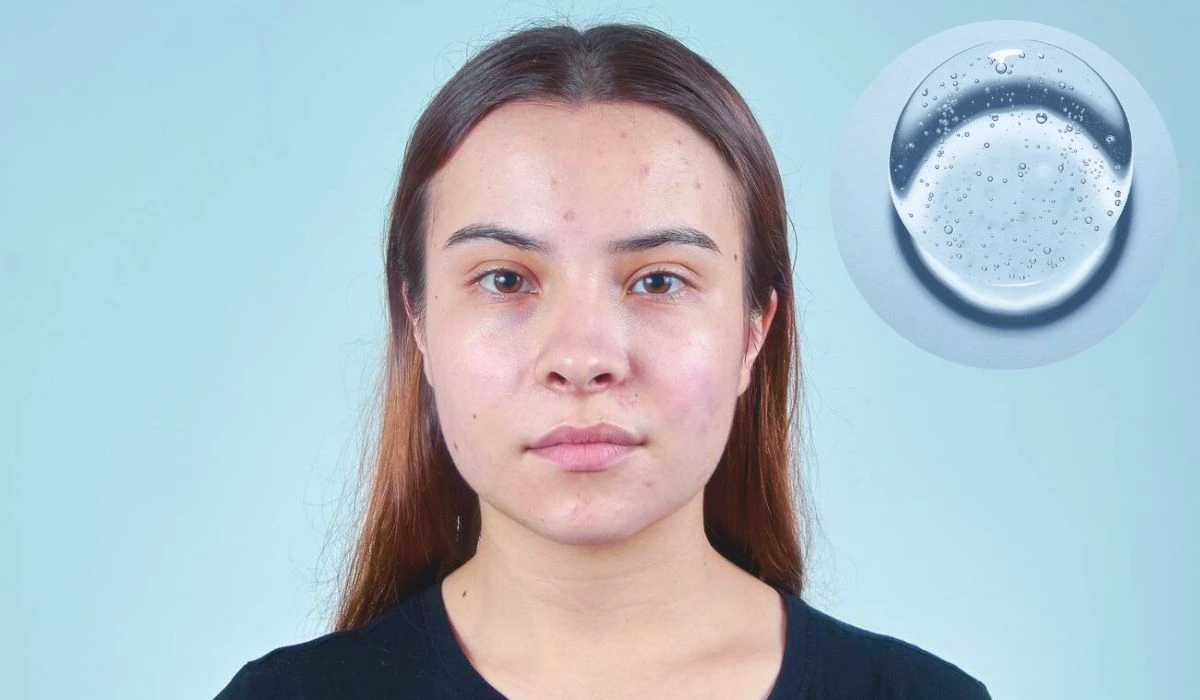Glycerin is taking over skincare routines due to its amazing properties. It’s a holy grail for oily skin! Let’s explore the benefits, side effects, and how to use it.
Glycerin is a natural humectant. It draws in moisture and locks it in, keeping skin hydrated without extra oil. It won’t clog pores or cause breakouts. Plus, it helps balance sebum production.
Glycerin also offers more benefits. It creates a protective barrier against external aggressors, promotes cell regeneration, and helps maintain skin elasticity.
Importance Of Glycerin In Skincare
Glycerin is a go-to substance for skin care. It’s a clear, thick liquid made from plant oils or animal fats. It has humectant properties, which means it draws and holds moisture in the skin. It’s excellent for both oily and dry skin.

Apply it on your skin and it forms a barrier, locking in hydration. This keeps skin balanced: not too oily, not too dry. Plus, glycerin has antimicrobial properties. It can help fight off bacteria, so it’s great for oily and acne-prone skin.
Glycerin also has anti-aging benefits. It plumps up fine lines and wrinkles, giving your skin a younger look. Plus, it adds radiance and improves skin texture.
Glycerin has been used in various industries for centuries. Early on, people realized its moisturizing power. Over time, scientists have discovered more and more about its benefits, leading to its use in many skincare products.
Benefits Of Using Glycerin For Oily Skin
Glycerin for oily skin has multiple advantages that can help maintain a healthy complexion. It hydrates without adding extra grease. It also aids in controlling oil production and reducing acne and breakouts. Plus, it serves as a shield against outside pollutants and prevents moisture loss. And, it’s non-comedogenic and suitable for all skin types.
In addition to these great benefits, glycerin has special qualities that make it ideal for oily skin. Its humectant properties attract water to the surface, ensuring lasting hydration. Moreover, it soothes irritated or inflamed skin, relieving redness and sensitivity.
Must Read: How Can Oil Cleansing Methods Help Control Oily Skin?
How To Use Glycerin For Oily Skin?
Glycerin’s a great, moisturizing option for oily skin! Here’s how to use it:
? Wash your face with a mild cleanser and pat it dry.
? Take a few drops of glycerin and mix it with the same amount of water.
? Apply the mixture with a cotton pad or your fingertips.
? Massage it into your skin in circular motions for 5 minutes.
? Leave it on for 10 more minutes to let it soak in.
? Rinse with lukewarm water and pat dry.
Side Effects Of Glycerin On Oily Skin
Glycerin is usually safe for oily skin. But, be aware of possible side effects. These are the drawbacks of using glycerin on oily skin:
- Clogged pores, resulting in breakouts and acne. This is because of a barrier trapping oil and dirt.
- Allergic reactions like redness, itching, or irritation.
- Excessive use can make skin greasy and sticky.
- In humid climates, too much moisture can be attracted to the skin.
- High concentrations of certain ingredients may cause dryness or irritation for sensitive skin.
To use glycerin safely:
- Do a patch test before use.
- Look for glycerin as one of multiple ingredients.
- Limit usage to prevent problems.
- Consult a dermatologist if necessary.
Use oil-free moisturizers with lower glycerin concentration, or get help finding alternatives for your skincare needs.
Precautions And Tips For Using Glycerin For Oily Skin
Glycerin is a powerful skincare ingredient that can benefit oily skin when used properly. Here are a few steps to get the most out of it:
? Cleanse your face: Start with a gentle cleanser to remove dirt and impurities. Pat dry with a clean towel.
? Dilute the glycerin: Mix it with water or a carrier oil like jojoba oil in equal parts. This will stop the glycerin from feeling heavy on your skin.
? Patch test: Try it on a small area of skin before applying it to your entire face. This will check for any adverse reactions or allergies.
? Apply gently: Take a few drops and massage them onto your face using upward motions. Be careful not to rub too harshly – it could irritate your skin.
? Moisturize: Glycerin draws moisture into your skin, so follow up with a lightweight moisturizer to keep it hydrated.
? Use sparingly: Too much glycerin can make your skin feel greasy and congested – start with a small amount and adjust accordingly.
Unique facts about using glycerin for oily skin:
- It has natural emollient properties that soften and smoothen skin without clogging pores.
- It regulates sebum production, reducing excessive oiliness while maintaining hydration.
- The lightweight consistency makes it suitable for all seasons.
- Its mild nature means it’s unlikely to cause irritation or breakouts – perfect for sensitive skin.
Glycerin has been used for centuries to nourish and protect skin from harsh environmental conditions. In modern times, it remains a popular skincare ingredient due to its exceptional moisturizing properties.
Remember, when using glycerin for oily skin, be careful and use it sparingly to get the best results.
Also Check: How To Use A Setting Powder For Oily Skin? Get Ready For A Perfect, Shine-Free Look!

